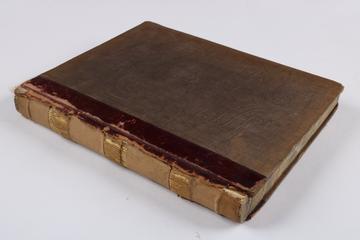
Taylor, John 1808 - 1881
- Nationality:
- English; British
(1808-1881), Mining engineer
John Taylor, son of John Taylor (1779-1863), mining engineer, was born at Holwell, near Tavistock, on 11th August 1808, and received his education at the Charterhouse, and subsequently at Manchester College, York. After acquiring much practical knowledge in the mines sunder the management of his father, he was sent with his brother Richard to Germany, and spent nearly the whole of the year 1828 in visiting all the principal mines of that country and of Austria.
Soon after his return, Taylor was appointed by his father to a position in the management of lead mines in Flintshire, which were then in great activity. Eventually he took the chief management of the great Mold mines and of the Halkyn mines in that county; and took an active part in the opening out of many of the long-abandoned mines of Cardiganshire. During the same period, he was also occupied with the Grassington mines in Yorkshire, the great mine of Minera in Denbighshire, and the Allport mines in Derbyshire, where he employed a water-pressure engine of enormous power, designed by the late Mr. Darlington.
In 1845 he came to London to join his father as a partner. In 1853 the management of the Linares lead mines in the province of Andalusia, Spain, came into the hands of Messrs. John Taylor and Son; and this led subsequently to the formation of the Fortuna and Alamillos companies for working other lead mines in the same district.
The discovery of silver at Hien del Encina, in the province of Guadalaxara, Spain, engaged the attention of the firm, and they formed the Bella Raquel Mining Company working these ores. A leading part was taken by Taylor, in the planning of the Fabrica la Constants for that company. In this establishment the Freiberg process of amalgamation was carried out with great success, with the advantage of improved English machinery. At the same time, he developed the mines of Palhal and Carvalhal in Portugal, yielding argentiferous copper ores together with ores of cobalt and nickel. The firm had undertakings also in Central America, in Canada, in Western Africa, and at the Cape of Good Hope.
In 1853 Taylor inspected the argentiferous lead mines of Pontgibaud, Puy de Dome, France, which led to an Anglo-French company being formed for working them: Messrs. John and Richard Taylor (the latter having now joined the firm) conducting the entire practical management of the extensive mines and smelting works. Taylor became a member of the Mechanical Engineers Institution in 1862. In addition to those mentioned, the firm were connected with many other metalliferous mines of almost every description.
Taylor died at St. Albans on 20th April 1881, at the age of seventy-two.